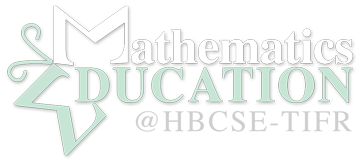Home › Forums › Middle School Mathematics Education › Elementary Math Lessons For Homeschooling
- This topic is empty.
-
AuthorPosts
-
-
jadegary64457
GuestNow, the kindergarten, first grade and second grade are like first couple of the steps of the stairs. You can learn this level of math easily, as you can jump enough to take yourself to second or third step of the stairs easily. As it is very hard to reach sixth or seventh step of a stairs by jumping from the ground, exactly the same way to learn grade five or higher grade math is very hard (or impossible) without having the good knowledge of the kindergarten to grade three or grade four math.
Next, concentrate on word problems. If your child has trouble with word problems follow these steps: First, work the problems out physically. This means use real cups, quarts and gallons and actually measure and pour the water. Even if it is a word problem about two cars driving toward each other, you can use small matchbox cars for a physical demonstration. Keep working with the real physical objects until the problem is mastered. Second, move on to drawing pictures. Draw pictures of the cups, quarts and gallons. Third, use numbers to represent the real objects and work the problems. Don’t rush the steps, make sure he has mastered the word problems in this order: physical, then pictures, then numbers representations.
Buy lots of workbooks for your child. Get her to solve lots of math problems. You can also download worksheets from the internet. You can start slow but over time your child should be spending at least an hour a day on math. I am not joking. Since your child is starting with math problems at a lower grade level she shouldn’t find it all that difficult and dreary.
IMPORTANT! If children are “switched off” to math at ages 5 or 6 or 7, it is NOT because of the math! Counting and addition do not turn children off to math. If a child this age is feeling negative about math, it is because he/she has already picked up someone else’s negatives attitudes. The solution to the problem is not a website because the problem is not with the math!
When you do this, also let your students know how mathematicians think. One piece of research that is helpful to know is that mathematicians spend a long time thinking about how to set up a problem, a little bit of time doing the problem, and kino-ussr.ru a long time “looking back” by asking the question, “Does this make sense?’ Model that for your students, by putting up a complex problem on the board and spending time not just jumping into a solution, but just talking about what strategies you might use to solve the problem.
It’s handy when you’re shopping. Whether you’re doing the groceries or racking up a huge bill for some random self-pity shopping, knowing your way around numbers would help you tally your costs, and fast. This skill is particularly handy when you’re in flea markets and garage sales, since accounting for your purchases would be done manually. With the skill of basic mathematics under your belt, you’ll be sure to finish your transactions faster, and no shopkeeper would ever be able to cheat a few cents or dollars off you.
Chess and Chinese checkers are also great board games that you can play with your kids to help them learn math. These games allow them to learn and identify patterns as well as develop their tactical abilities as well.
Chris Ferguson is one of the best and most legendary poker players in the world. With that said, it is safe to say whatever he does; he is doing it right. There are not many players that know the math better then he does. You may or may not have heard about Chris Ferguson’s 0 – 10,000 dollar challenge. He made a goal to start from 0$ and get up to $10,000.00 and he did it in about 18 months. It took him 9 months to get from $0-$100. It took him another 9 months to get from $100 to $10,000.
The good news is that it is very easy to help your child understand these concepts. The key is to practice a few minutes several times a day. Make it a family affair so your child does not feel overly stressed. Your child or children will remember the lessons better if they had fun with it.
Many children do much better when they can do actual hands on math problems; so one of the 10 ways to make learning math more fun is to use a tape measure or a ruler and have them search through the house for spoons which are the same size. Using a tape measure is a great way to teach them fractions as well.
-
-
AuthorPosts
